* Life * Research * Experiments * Media < back
How Tilly Edinger researched and gaines her knowledge

As a paleontologist, Tilly Edinger focused on the brain matter of living beings from ancient times, studying their development and changes. She mainly used available fossils for her research, which required her to do something that was actually impossible: examine brain matter, meaning soft tissues that had long since decayed. "I discovered this only incidentally, (...): various people had described very interesting fossils that were not skeletal parts, but namely casts from the interior of fossil skulls. Within the skull (...) the form of the brain, decayed a long time ago, had been preserved. ”
More than 100 years earlier, the scientist Georges Cuvier had already recognized this. But it was only through Tilly Edinger that this knowledge gained special value for evolutionary theory, since her research method consisted of examining and comparing many so-called brain endocasts very closely.
The brain endocasts that Edinger used partly occurred naturally, for instance when an animal's skull had lain in flowing water. Through openings, like eye sockets, various substances had deposited and filled the skull. If the water contained a lot of calcium, the deposits petrified and reproduced the exact interior of the cranial cavity, meaning the outer shape of the brain; sometimes even the course of blood vessels could be seen. A cast of this kind was the brain of the dinosaur Nothosaurus, about which she wrote her doctoral thesis.
But in order to say something about development, abilities and perhaps even the long past habitats of vertebrates she examined, Tilly Edinger needed more brain endocasts than these natural ones. To achieve this she did the following: She poured liquid gypsum into existing fossil skulls. When it hardened, the plaster could be removed from the cranial cavity, leaving the exact shape and surface of the brain clearly visible.
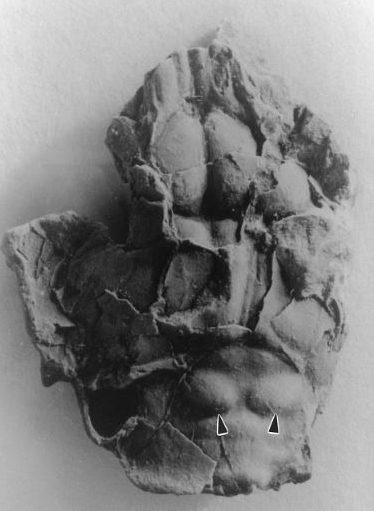
This provided her with enough material to scientifically evaluate her examinations with certainty. She would either compare different animal species, or research the brains of one particular animal species from different periods. Depending on which areas and cerebral convolutions of the brain were formed, Edinger was able to draw conclusions about the stage of development and abilities of the animals. On the fossil brain of a bat, for example, she discovered two protrusions that still exist in bats living today, enabling their orientation in the dark through so-called ultrasound echo. From this she was able to conclude that even "ancient" bats, already possessed the ability to orient themselves by the echo of their cries, which are inaudible to humans.
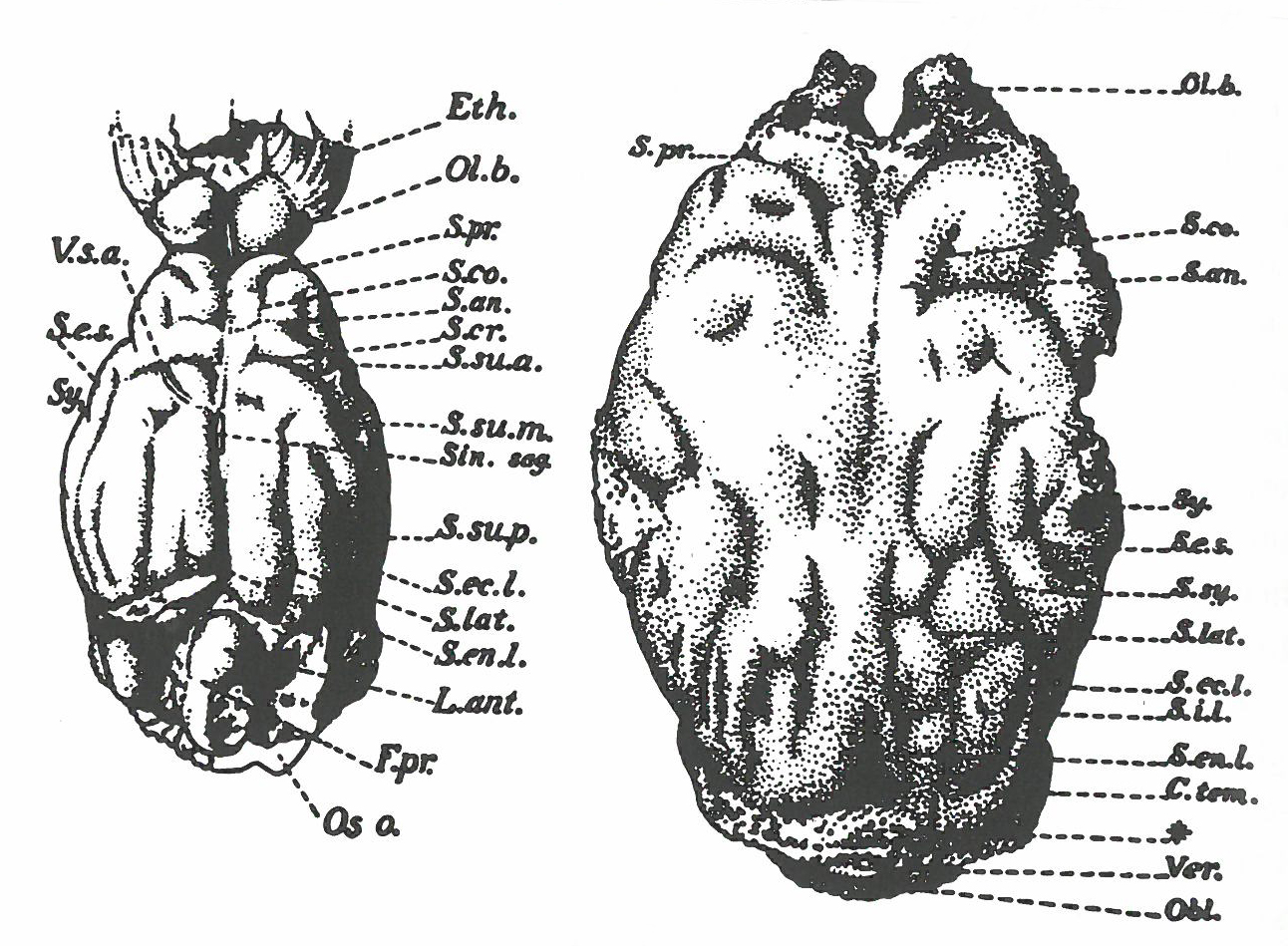
Tilly Edinger began her greatest scientific work while living in the United States: the examination of horse brains. Since the development of the horse had mainly taken place in America, she was able to research large collections in museums and research institutes. “I've been tracking fossil horse brains from all over America, from 55 million years ago to the present day. There have been enormous changes.” She was the first to find out how these changes unfolded, and came to the groundbreaking realization that brain size did not increase along with body size, as previously had been assumed. Edinger was able to show that the trenches and furrows in the brain responsible for its enlargement and the increase in capabilities had developed independently. She called these independent growth rates the "principle of non-correlation" (correlation means interdependence).
Tilly Edinger's successful research methods were closely related to her personal talents. She was a very good observer, and was able to explain her observations from different angles. She could also think on different levels: even if she only had parts of fossils in front of her, she could continue the lines and forms in her imagination, and visualize the no longer existing skull or entire brain. In addition, she was able to bring together the scattered existing findings from other scientists, reinterpret and evaluate them.
How Tilly Edinger came to her research subject
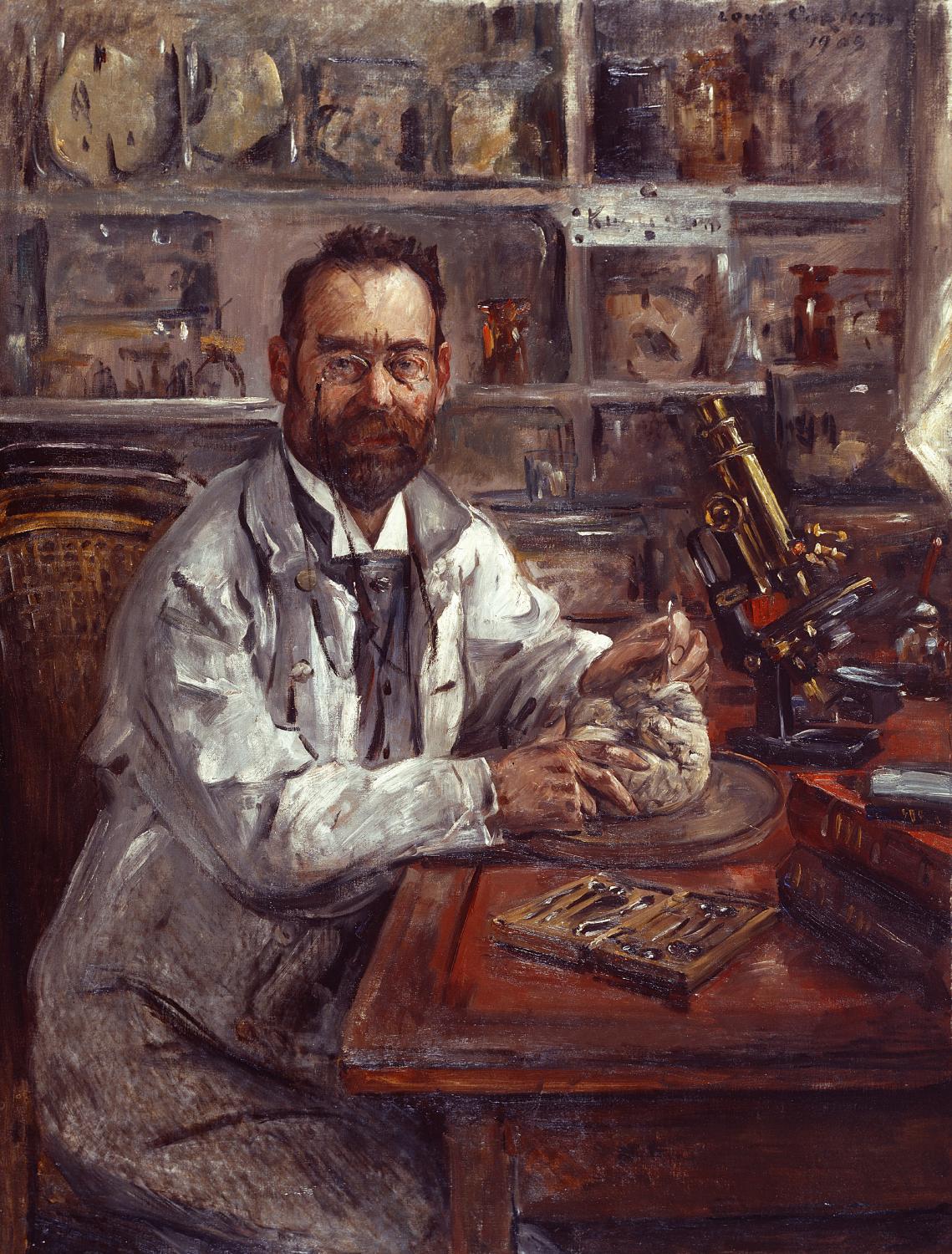
"I was already in the Senckenberg as a small child." Tilly’s interest in animal science and extinct species had begun at pre-school age. She marveled at the dinosaur skeletons, the stuffed and exotic animals and colorful butterflies in the museum. In addition, Tilly came into contact with brain matter early on through her father. As a neurologist, he dealt with their structure and development, and had a large collection of brains from vertebrate animals. He compared them and recognized "old" and "newly acquired" parts. He researched how the formation and shape of the brain related to the special abilities and characteristics of an animal.
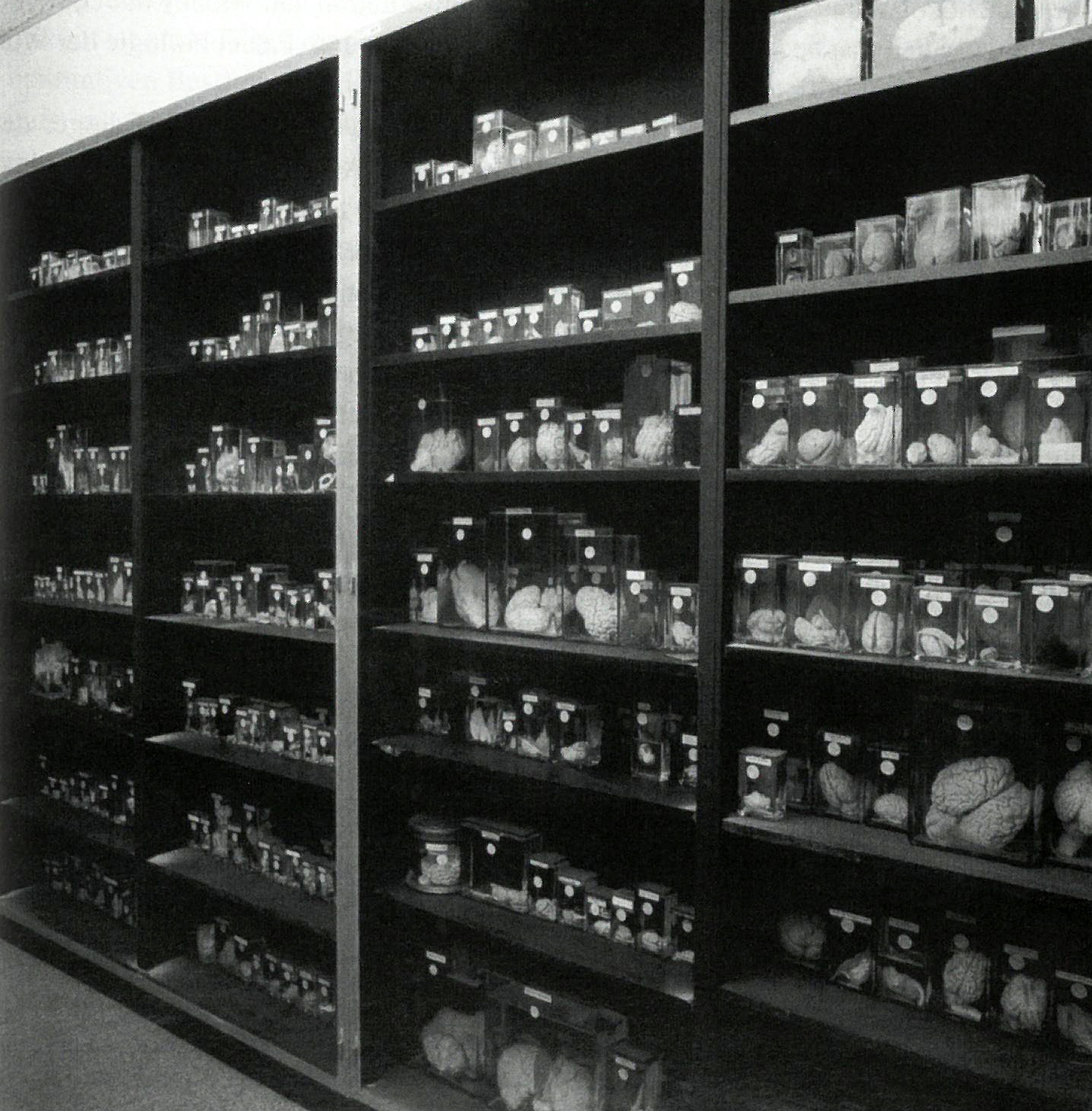
As a child, Tilly was used to seeing brain matter floating in glass jars, preserved by special liquids. After finishing school, Tilly wasn’t sure what to study; she started with geology and zoology, but later decided on paleontology. A book she had read by Othenio Abel was also crucial to this choice, describing his field of work, paleobiology. With the help of fossils, he investigated the habits of ancient animals and their relationship to the existing environment.
Tilly was intrigued by this idea, and wanted to find out what role the brains of these long-extinct creatures played. Specializing in this area was an obvious choice, since she had been acquainted with brain matter since her childhood. Now she connected paleontology with her father's research area, neurology, the teaching of the structure of the nervous system or brain, to create a new science, paleo-neurology. Her entire life as a researcher she was able to draw upon earlier experiences: on the countless brains of snakes, lizards or alligators she had observed in her father's extensive collection, and the shape of which she had memorized.
How Tilly Edinger documented her findings
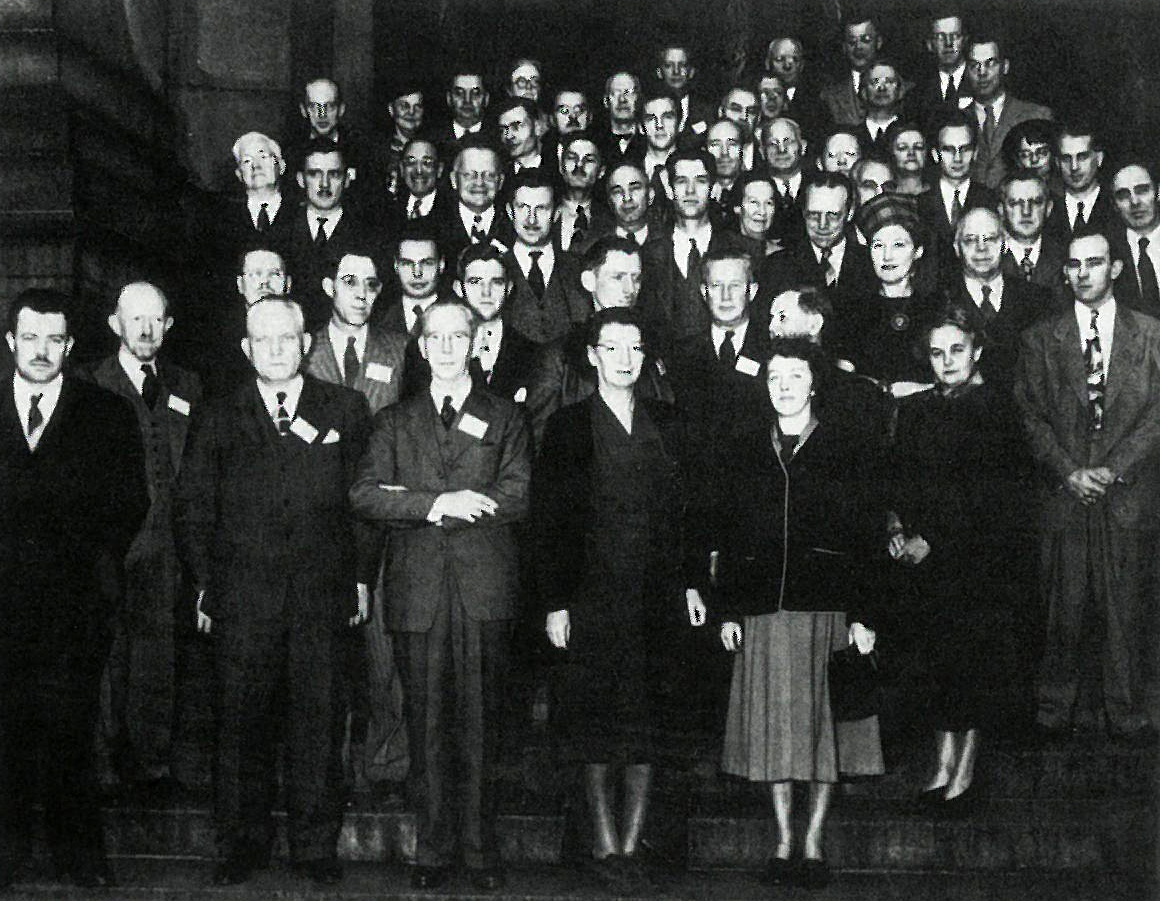
Tilly Edinger documented her research results in books and journals. At first she wrote in German; after fleeing to the United States in English. Her publications had titles such as "About Nothosaurus", "Fossil Brains" or "The Evolution of the Horse Brain". She also made long trips and gave lectures in America and Europe. She was a member of the Society of Vertebrate Paleontology and honorary member in many associations that organized various specialist conferences: since 1947 Senckenberg Natural Science Society, 1962 Paleontological Society, 1964 Museum of Comparative Zoology. On all these occasions, she presented her findings or exchanged her experiences with colleagues. In radio interviews and scientific essays she explained her work to a wider audience.
Her many letters and cards were a very special form of documentation. She wrote to friends and scientists around the world, mixing research, private life and impressions of her living environment with great linguistic wit.
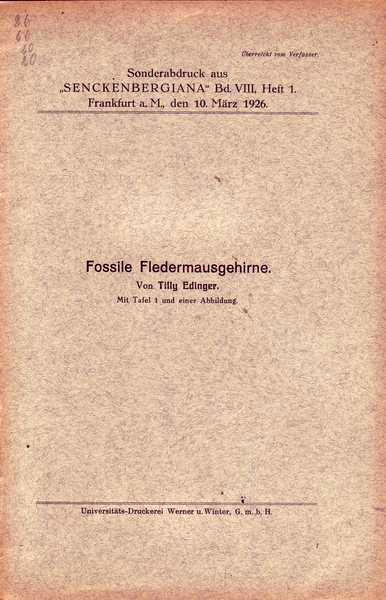
How Tilly Edinger's findings were advanced and the importance of her research today
With her studies on fossil horse brains, Tilly Edinger established a fundamentally new insight in the theory of evolution that is still valid: she demonstrated that the brains of animals developed independently, not parallel to their body growth - meaning the extinction or survival of a species is not necessarily related to its brain size. A few years later, the English zoologist de Beer came to similar results. He spoke of ‘mosaic evolution’. By this he meant that a species develops through successive change of different traits; all characteristics do not change at once. The proof of this is so-called transitional species, which are made up of varying parts, like a mosaic.
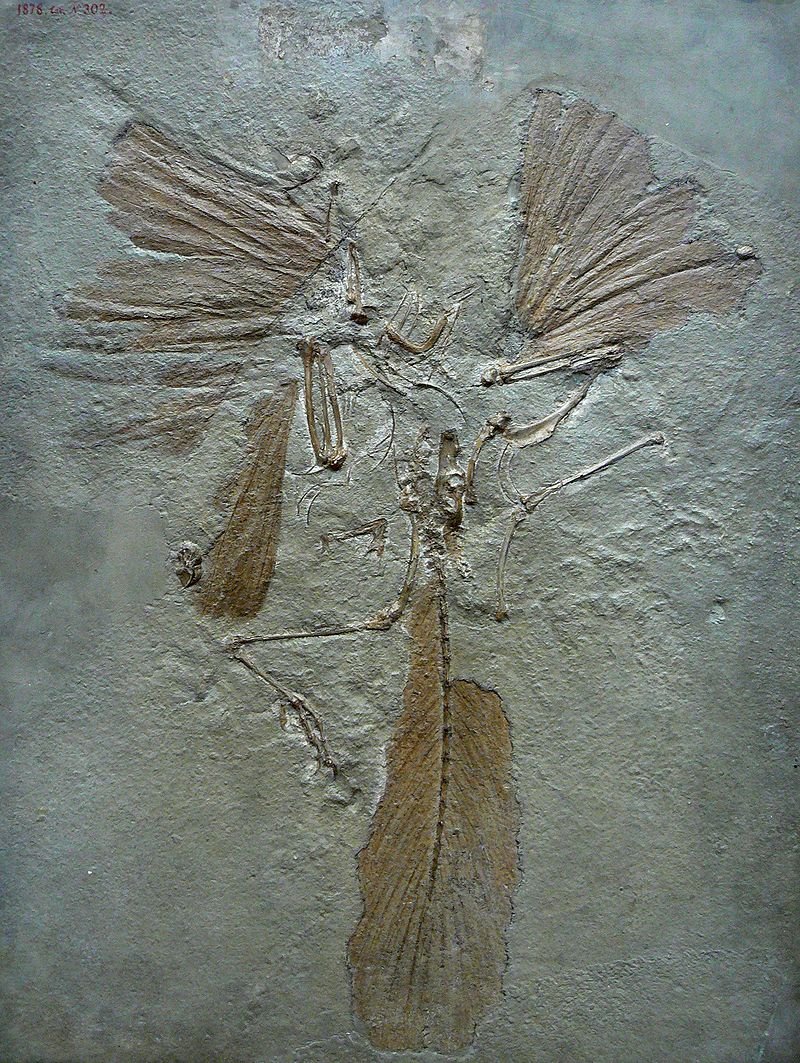 For instance, the brain, front leg claws, teeth and vertebrae of the dinosaur Archaeopteryx of was still reptile-like. But it was also bird-like, with feathers and a specially shaped hind leg. Paleontological research is still based on this mosaic evolution, or as Edinger called it, “non-correlation”.
For instance, the brain, front leg claws, teeth and vertebrae of the dinosaur Archaeopteryx of was still reptile-like. But it was also bird-like, with feathers and a specially shaped hind leg. Paleontological research is still based on this mosaic evolution, or as Edinger called it, “non-correlation”.

Today there are state-of-the-art devices (scanning electron microscopes, super X-ray devices: synchrotron emitters) that can recognize even the smallest particles. This is why old objects are "questioned" anew. Scientists from the Paris National Museum and Natural History Museum in New York used special X-rays to examine a 300-million-year-old skull fossil that had long been in the museum. They received a three-dimensional, plastic image and discovered the almost completely preserved nerve tissue in the brain. Up until then it was assumed the soft brain interior immediately decayed and could not petrify.

With these methods it will thereby be possible to expand previous knowledge, and describe much more precisely the abilities of living beings that existed long ago. In Edinger's time, only the external shape and division of the brains were known, and one often had to trust one's own scientific imagination.
Despite these new opportunities, Tilly Edinger's research achievements remain pioneering and relevant. The Tilly Edinger Prize, which has been awarded to young scientists by the German Paleontological Society since 2004, also commemorates this. A square near the Senckenberg Museum is also called Tilly-Edinger-Platz, and since 1994 even a crater on Mars bears her name.